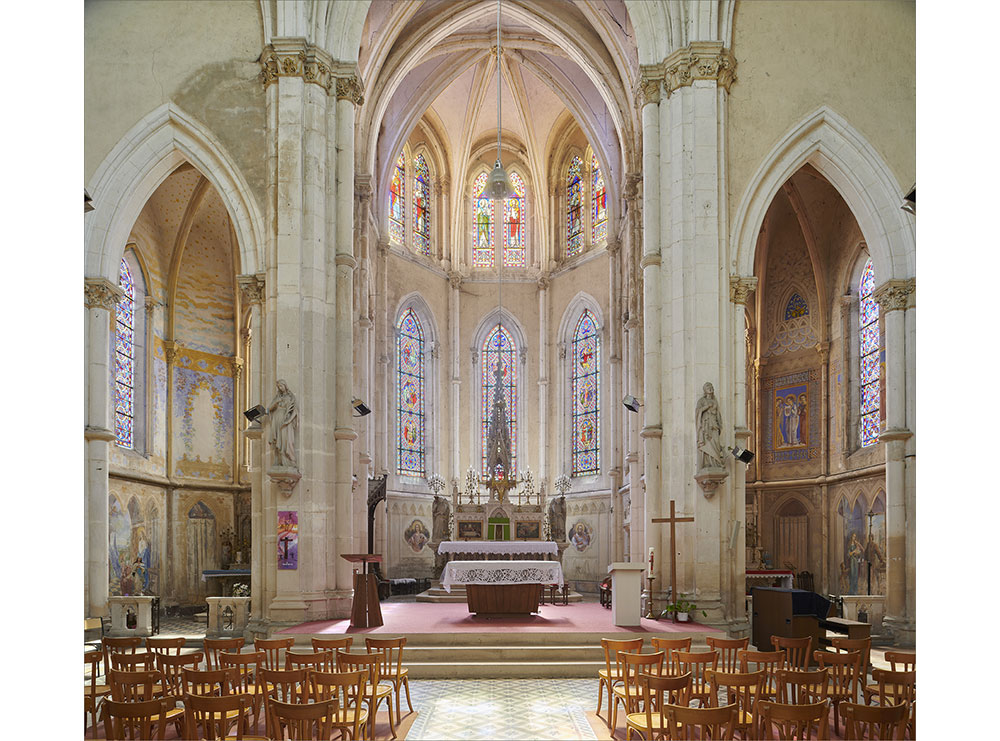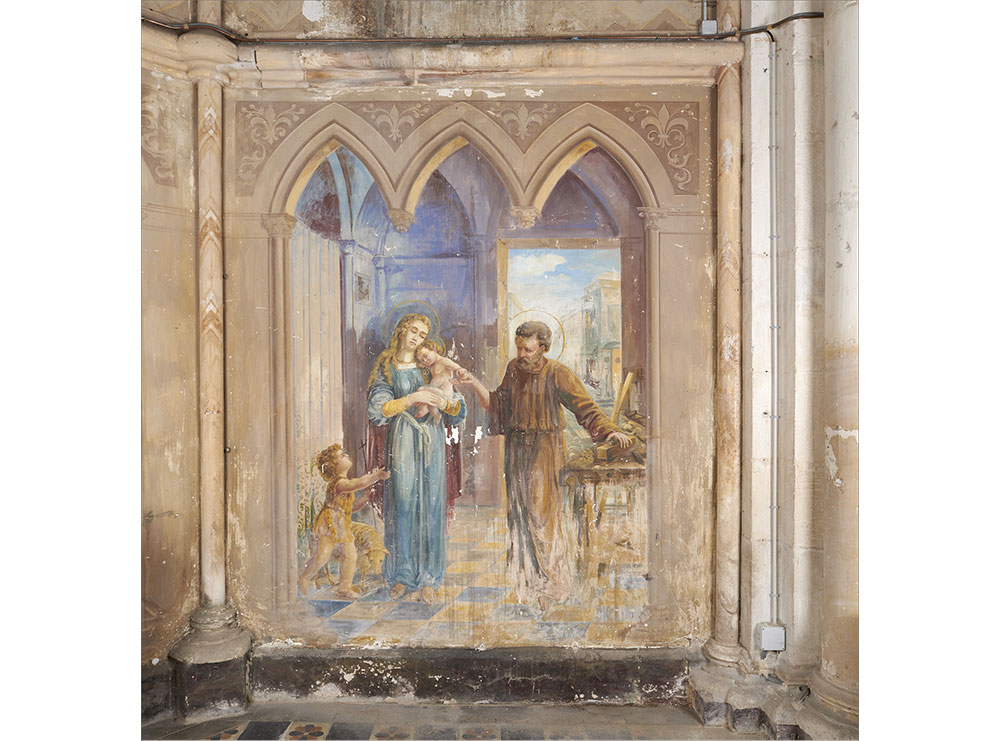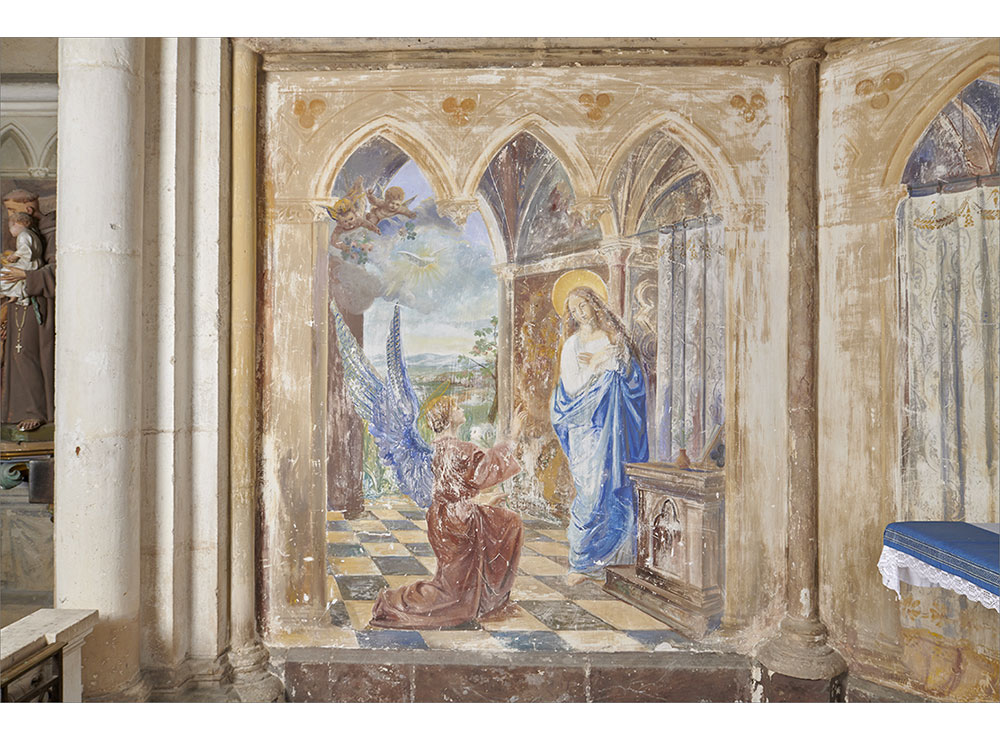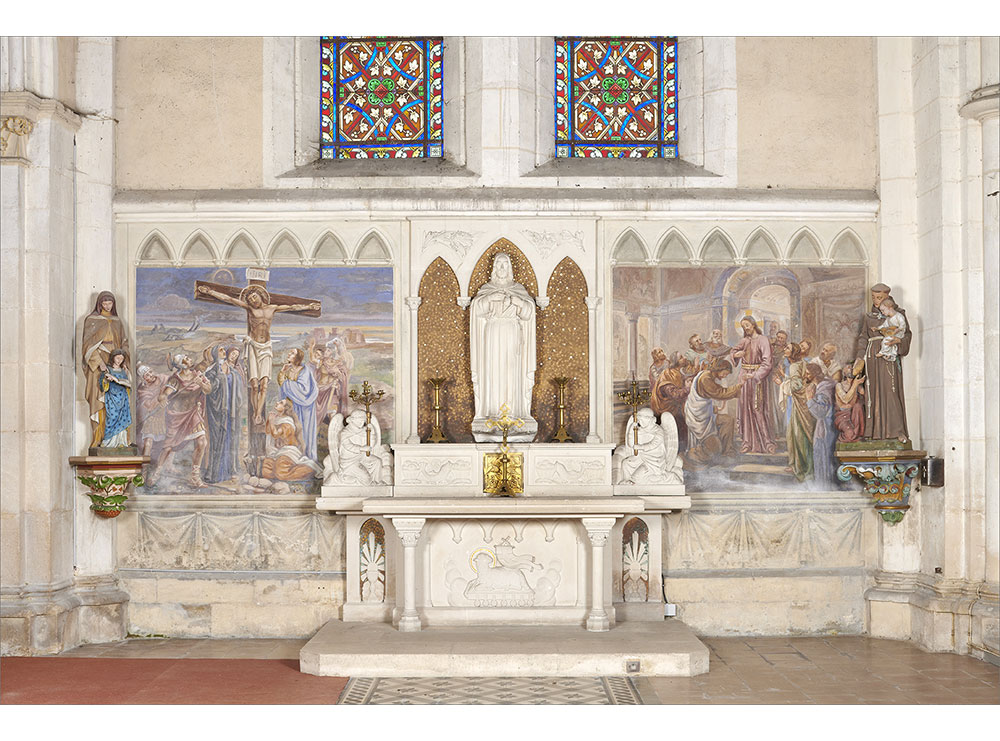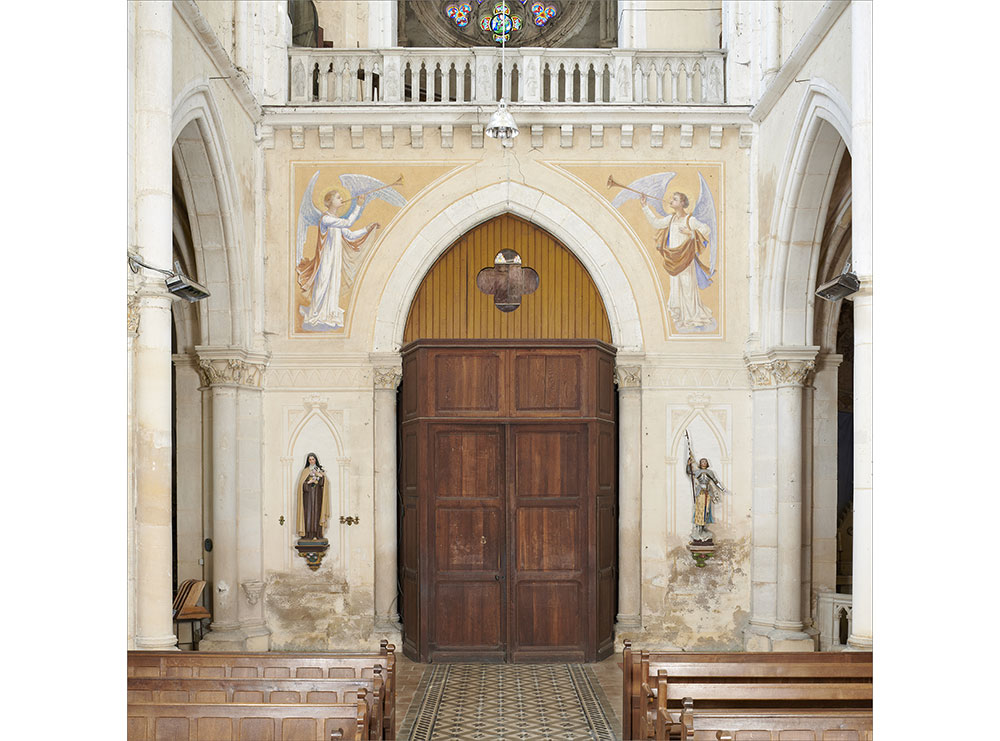Lacroix-sur-Meuse, Church of St John the Baptist
Upon arriving in the Meuse region in 1925, the Donzelli family took refuge in the village of Lacroix and Duilio quickly set up his workshop on the main street, just opposite the church. On the façade, the letters of his name, a sign of his presence here, are still visible.
Since the church had been badly damaged during the war by bombardments, the town council naturally turned to Donzelli when the interior of the building needed to be restored in 1927. Duilio, who was known as a sculptor, was hired to repair the altars and statues and cover the walls with whitewash. He then painted the panels depicting the four evangelists in the choir. He probably executed its first monumental painting. He then decorated the two apse chapels, the chapel of the baptismal fonts, the surround of the entrance door and the western transept, for which he also sculpted the altar of the Sacred Heart and the statue above it. The transept was probably developed later on, as the technique appears to be more controlled for the Crucifixion and the Disbelief of St Thomas. The date 1936 was added beneath the feet of the soldier holding a spear.
His training at the School of Fine Arts is very much in evidence in the various scenes painted by the artist, who drew inspiration from the great Italian masters and also Scandinavian ones: behind the high altar, the panel showing the Virgin with Child reproduces a painting by Carlo Dolci (The Madonna of the Veil, 17th century, Palazzo Corsini, Rome); the marriage of the Virgin is reminiscent of the compositions of Perugino and Raphaël; the musician angels in the background were inspired by Sienese painting; on the panel depicting the Holy Family, the posture of the Virgin holding the child is very reminiscent of The Virgin and Child with the Family of Burgomaster Meyer* by Hans Holbein the Younger.
In technical terms, the church served as a testing ground because Donzelli painted with a technique similar to that of fresco but also on a coating of plaster in the apse chapels, which explains the fragility of the painting in these chapels. The one on the left is also incomplete at the top: some recesses were painted to accommodate figures which were never put there. In the right-hand apse chapel, one might think that the upper register with the angels holding instruments of the Passion is the work of Dante, Duilio’s son, because patches of uniform vivid colour and stylisation in the drapery may be seen there.
The work as a whole, therefore, constitutes an ensemble which is heterogeneous but particularly interesting from the point of view of understanding the artists’ development.
* painted between 1526 and 1528, this oil on wood, also known as the Madonna of Darmstadt, is kept at the Kunsthalle Würth in Schwäbisch Hall (Württemberg).
Apse chapel: small semi-circular chapel around the main apse or on the arms of the transept of a church.

